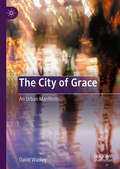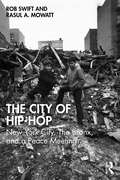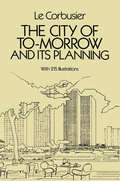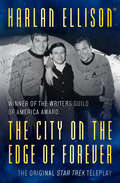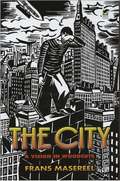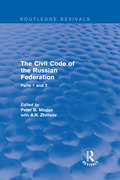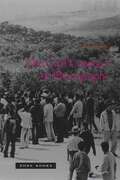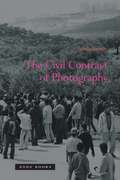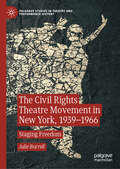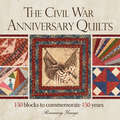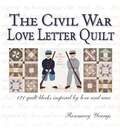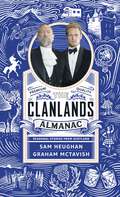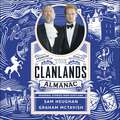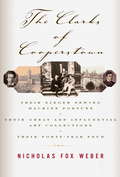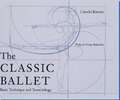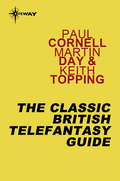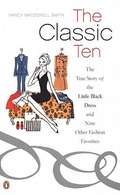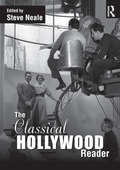- Table View
- List View
The City of Grace: An Urban Manifesto
by David WadleyIn this sweeping appraisal of the urban condition, David Wadley argues that anything less that high-level resolution in modelling the well-being of inhabitants is wasting precious time. Humanity is encountering rising entropy, caused by unsustainable economic and demographic expansion. Supported by a strong interdisciplinary backdrop featuring systems and crisis theories, The City of Grace tackles these obstacles by picturing gracious function and graceful form in a human-scale settlement. In an attempt to salvage things lost in the teleology of urban development over the last 100 years, the outlook is both heterodox and contrarian. How long can we all go on in the present way? In addressing grace, a more elevated concept than those focusing previous urban analyses, this manifesto aims not to placate or please but, instead, to get humanity to face the encompassing realities it tries so hard to forget.
The City of Hip-Hop: New York City, The Bronx, and a Peace Meeting
by Rob Swift Rasul A. MowattThe City of Hip-Hop positions a unique conceptualization of the history of Hip-Hop, that it was a combination of forces that produced the environment for Hip-Hop to specifically grow in the geographies of New York City and its boroughs. This book argues it was the political forces of the 1970s combined with the economic forces of free market capitalism and privatization of public services, neoliberalism, and the social forces of the deindustrialization of major cities and displacement of populations that led the cultural creation of the “Boogie Down” Bronx. The City of Hip-Hop shows how Hip-Hop is a socio-political reaction that created an alternate reality with a geographic specificity, and it is the interplay with those forces that nurtured it to become the culture force that we know it today in New York, Philadelphia, Boston, Los Angeles, Chicago, London, Manchester, Liverpool, Berlin, São Paulo, Tokyo, Washington D.C., Seattle, Paris, Houston, Dallas, Miami, Atlanta, Detroit, Toronto, Cleveland, Johannesburg, Barcelona, Belfast, Gaza City, and elsewhere. Once those of us as fans of the culture zoom out to see such a bigger picture, a much-needed criticism and retelling of the culture and art of Hip-Hop emerges as our understanding.This book is essential for preservers of the culture, students, scholars, and general readers interested in urban planning, urban design, urban geography, place-making, American Studies, Cultural Studies, Black Studies, and Latin American Studies.
The City of Tomorrow and Its Planning (Dover Architecture)
by Le Corbusier Frederick EtchellsIn this 1929 classic, the great architect Le Corbusier turned from the design of houses to the planning of cities, surveying urban problems and venturing bold new solutions. The book shocked and thrilled a world already deep in the throes of the modern age.Today it is revered as a work that, quite literally, helped to shape our world. Le Corbusier articulates concepts and ideas he would put to work in his city planning schemes for Algiers, São Paulo, Rio de Janeiro, Buenos Aires, Barcelona, Geneva, Stockholm, and Antwerp, as well as schemes for a variety of structures from a museum in Tokyo to the United Nations buildings. The influence it exerted on a new generation of architects is now legendary.The City of To-morrow and Its Planning characterizes European cities as a chaos of poor design, inadequate housing, and inefficient transportation that grew out of the unplanned jumble of medieval cities. Developing his thesis that a great modern city can only function on a basis of strict order, Le Corbusier presents two imposing schemes for urban reconstruction — the "Voisin" scheme for the center of Paris, and his more developed plans for the "City of Three Million Inhabitants," which envisioned, among other things, 60-story skyscrapers, set well apart, to house commercial activities, and residential housing grouped in great blocks of "villas."For those who live in cities as well as anyone interested in their planning, here is a probing survey of the problems of modern urban life and a master architect's stimulating vision of how they might be solved, enlivened by the innovative spirit and passionate creativity that distinguished all of Le Corbusier's work.
The City on Display: Architecture Festivals and the Urban Commons (Routledge Research in Architecture)
by Joel RobinsonThe City on Display: Architecture Festivals and the Urban Commons reflects on the biennials, triennials, and other festivals of architecture and design that have been held over the last two decades, as they expand and transform in response to the exigencies of ‘planetary urbanisation’. Joel Robinson examines the development of these large-scale, international, and perennial exhibitions as they address such challenges as urban regeneration, heritage preservation, climate change, and the migration crisis. Homing in on examples of festivals in Venice, Rotterdam, Oslo, Tallinn, Sharjah, Seoul, Shenzhen, and Hong Kong, the author describes how they alter the public spaces that host them, either through civic boosterism and gentrification, on the one hand, or through a reassertion of the urban commons and the right to the city, on the other hand. He attempts to thematise the architecture festival's relationship with the city and interrogate its potential as a forum for global debate about the emergencies of the urban condition. This book will be beneficial for students and academics of architecture and urbanism, and especially those who have an interest in how the city gets exhibited at such festivals and even reimagined as something other than it currently is.
The City on the Edge of Forever: The Original Teleplay
by Harlan EllisonThe original teleplay that became the classic Star Trek episode, with an expanded introductory essay by Harlan Ellison, The City on the Edge of Forever has been surrounded by controversy since the airing of an "eviscerated" version--which subsequently has been voted the most beloved episode in the series' history. In its original form, The City on the Edge of Forever won the 1966-67 Writers Guild of America Award for best teleplay. As aired, it won the 1967 Hugo Award. The City on the Edge of Forever is, at its most basic, a poignant love story. Ellison takes the reader on a breathtaking trip through space and time, from the future, all the way back to 1930s America. In this harrowing journey, Kirk and Spock race to apprehend a renegade criminal and restore the order of the universe. It is here that Kirk faces his ultimate dilemma: a choice between the universe--or his one true love. This edition makes available the astonishing teleplay as Ellison intended it to be aired. The author's introductory essay reveals all of the details of what Ellison describes as a "fatally inept treatment" of his creative work. Was he unjustly edited, unjustly accused, and unjustly treated?
The City: A Vision in Woodcuts (Dover Fine Art, History Of Art Series)
by Frans Masereel"An absolute song for an ongoing visit with timelessness." — The New York TimesThis graphic novel by an Expressionist master offers a stunning depiction of urban Europe between the world wars. First published in Germany in 1925, it presents unforgettable images from the tense and dynamic Weimar period, rendered in 100 woodcuts of remarkable force and beauty.A pacifist during World War I, Belgian-born Frans Masereel (1889-1972) sympathized with the struggles of the working classes and strived to make his art accessible to ordinary people. His evocative woodcuts convey scenes of work and leisure, wealth and deprivation, and joy and loneliness. Banned by the Nazis, Masereel's works were championed in Communist countries; however, the artist steered clear of political affiliations. His clarity of vision transcends any propagandist use of the images, which stand as timeless indictments of oppression and injustice.Thomas Mann described Masereel's works as "so strangely compelling, so deeply felt, so rich in ideas that one never tires of looking at them." Epic and unflinching in its scope, The City continues to influence modern fine and graphic art, while recapturing the mood of a vanished era. <P><P> <i>Advisory: Bookshare has learned that this book offers only partial accessibility. We have kept it in the collection because it is useful for some of our members. Benetech is actively working on projects to improve accessibility issues such as these.</i>
The Civil Code of the Russian Federation: Parts 1 and 2 (Routledge Revivals)
by Peter B MaggsThis title was first published in 1997: This is the definitive English translation of the new Russian Civil Code (Parts 1 and 2), often referred to as "the second Russian Constitution". The Civil Code of the Russian Federation is the result of a collaborative effort of a leading United States expert on Russian law and of the staff of the Private Law Research Center attached to the Office of the President of the Russian Federation -- the Center that had primary responsibility for drafting the new Civil Code. The authoritative introduction, complete table of contents. and comprehensive index combine to set this work far beyond the utility of any existing translations of the Civil Code. It will be a must-have resource for government, law and international business collections.
The Civil Contract Of Photography (Zone Bks.)
by Ariella Azoulay Rela Mazali Ruvik DanieliIn this groundbreaking work, Ariella Azoulay thoroughly revises our understanding of the ethical status of photography. It must, she insists, be understood in its inseparability from the many catastrophes of recent history. She argues that photography is a particular set of relations between individuals and the powers that govern them and, at the same time, a form of relations among equals that constrains that power. Anyone, even a stateless person, who addresses others through photographs or occupies the position of a photograph’s addressee, is or can become a member of the citizenry of photography. The crucial arguments of the book concern two groups that have been rendered invisible by their state of exception: the Palestinian noncitizens of Israel and women in Western societies. Azoulay’s leading question is: Under what legal, political, or cultural conditions does it become possible to see and show disaster that befalls those with flawed citizenship in a state of exception? The Civil Contract of Photography is an essential work for anyone seeking to understand the disasters of recent history and the consequences of how they and their victims are represented.
The Civil Contract of Photography
by Ariella AzoulayIn this groundbreaking work, Ariella Azoulay thoroughly revises our understanding of the ethical status of photography. It must, she insists, be understood in its inseparability from the many catastrophes of recent history. She argues that photography is a particular set of relations between individuals and the powers that govern them and, at the same time, a form of relations among equals that constrains that power. Anyone, even a stateless person, who addresses others through photographs or occupies the position of a photograph’s addressee, is or can become a member of the citizenry of photography.The crucial arguments of the book concern two groups that have been rendered invisible by their state of exception: the Palestinian noncitizens of Israel and women in Western societies. Azoulay’s leading question is: Under what legal, political, or cultural conditions does it become possible to see and show disaster that befalls those with flawed citizenship in a state of exception? The Civil Contract of Photography is an essential work for anyone seeking to understand the disasters of recent history and the consequences of how they and their victims are represented.
The Civil Rights Theatre Movement in New York, 1939–1966: Staging Freedom (Palgrave Studies in Theatre and Performance History)
by Julie BurrellThis book argues that African American theatre in the twentieth century represented a cultural front of the civil rights movement. Highlighting the frequently ignored decades of the 1940s and 1950s, Burrell documents a radical cohort of theatre artists who became critical players in the fight for civil rights both onstage and offstage, between the Popular Front and the Black Arts Movement periods. The Civil Rights Theatre Movement recovers knowledge of little-known groups like the Negro Playwrights Company and reconsiders Broadway hits including Lorraine Hansberry’s A Raisin in the Sun, showing how theatre artists staged radically innovative performances that protested Jim Crow and U.S. imperialism amidst a repressive Cold War atmosphere. By conceiving of class and gender as intertwining aspects of racism, this book reveals how civil rights theatre artists challenged audiences to reimagine the fundamental character of American democracy.
The Civil War Anniversary Quilts: 150 Blocks to Commemorate 150 Years
by Rosemary Youngs150 Quilt Blocks to Honor the People and Events that Shaped Our Nation The years 2011-2015 mark the 150th Anniversary of the U.S. Civil War. Through compelling diary entries, letters and 150 quilt blocks, author Rosemary Youngs helps convey the true stories of Civil War soldiers and nurses. Mixing traditional and original quilt blocks, The Civil War Anniversary Quilts includes clear instruction, full-size templates, a collection of historical documents, stirring images and amazing quilts. Combine the blocks to make any of three quilts featured in the book, or design your own arrangement to commemorate this profound era of our nation's history.
The Civil War Love Letter Quilt
by Rosemary YoungsThe Civil War Love Letter Quilt is a history book, quilting guide, and touching tale of the love shared by Civil War soldiers, their sweethearts and families. In the same innovative approach as other books of the popular letter and diary quilt-book series by Rosemary Youngs, this new guide showcases 121 different paper pieced block patterns with the actual letter that inspired them.
The Claddagh Ring
by Malachy MccourtIrish tales of the ring worn by many of the Irish, many of which were found at Ground Zero.
The Clanlands Almanac: Seasonal Stories from Scotland
by Sam Heughan Graham McTavishA seasonal meander through the wilds of Scotland.'If Clanlands was a gentle road trip through Scotland, this almanac is a top down, pedal to the metal up and down odyssey through the many byways of a Scottish year. An invitation to anyone who picks up the book to join us on a crazy camper van exploration over 12 glorious, whisky fuelled months. Mountains, battles, famous (and infamous) Scots, the alarming competitiveness of Men in Kilts, clans, feuds, flora, fauna, with a healthy sprinkling of embarrassing personal reminiscences thrown in. Much is explored, all is shared. It is a camper van cornucopia of all things Alba'.From First Footing to Samhain, Fringe Festival follies to whisky lore, Sam & Graham guide readers through a year of Scottish legends, traditions, historical and contemporary events, sharing personal stories and tips as only these two chalk-and-cheese friends can.As entertaining as it is practical, The Clanlands Almanac is a light-hearted education in Scottish history and culture, told through the eyes of two passionate Scotsmen. The perfect escapist guide, The Clanlands Almanac is intended as a starting point for your own Scottish discoveries.
The Clanlands Almanac: Seasonal Stories from Scotland
by Sam Heughan Graham McTavishA seasonal meander through the wilds of Scotland.'If Clanlands was a gentle road trip through Scotland, this almanac is a top down, pedal to the metal up and down odyssey through the many byways of a Scottish year. An invitation to anyone who picks up the book to join us on a crazy camper van exploration over 12 glorious, whisky fuelled months. Mountains, battles, famous (and infamous) Scots, the alarming competitiveness of Men in Kilts, clans, feuds, flora, fauna, with a healthy sprinkling of embarrassing personal reminiscences thrown in. Much is explored, all is shared. It is a camper van cornucopia of all things Alba'.From First Footing to Samhain, Fringe Festival follies to whisky lore, Sam & Graham guide readers through a year of Scottish legends, traditions, historical and contemporary events, sharing personal stories and tips as only these two chalk-and-cheese friends can.As entertaining as it is practical, The Clanlands Almanac is a light-hearted education in Scottish history and culture, told through the eyes of two passionate Scotsmen. The perfect escapist guide, The Clanlands Almanac is intended as a starting point for your own Scottish discoveries.
The Clanlands Almanac: Seasonal Stories from Scotland
by Sam Heughan Graham McTavishThe follow up to the quarter of a million-copy selling, Sunday Times and New York Times #1 bestselling, Clanlands. Sam & Graham turn tour guides once again to bring listeners more epic tales from Scotland.A seasonal meander through the wilds of Scotland.'If Clanlands was a gentle road trip through Scotland, this Almanac is a top down, pedal to the metal up and down odyssey through the many byways of a Scottish year. An invitation to anyone who picks up the book to join us on a crazy camper van exploration over 12 glorious, whisky fuelled months. Mountains, battles, famous (and infamous) Scots, the alarming competitiveness of Men in Kilts, clans, feuds, flora, fauna, with a healthy sprinkling of embarrassing personal reminiscences thrown in. Much is explored, all is shared. It is a camper van cornucopia of all things Alba'.From First Footing to Samhain, Fringe Festival follies to whisky lore, Sam & Graham guide listeners through a year of Scottish legends, traditions, historical and contemporary events, sharing personal stories and tips as only these two chalk-and-cheese friends can.As entertaining as it is practical, The Clanlands Almanac is a light-hearted education in Scottish history and culture, told through the eyes of two passionate Scotsmen. The perfect escapist guide, The Clanlands Almanac is intended as a starting point for your own Scottish discoveries.(P)2021 Hodder & Stoughton Limited
The Clarks of Cooperstown
by Nicholas Fox WeberNicholas Fox Weber, author of the acclaimed Patron Saints ("Exhilarating avant-garde entertainment"--Sam Hunter, The New York Times Book Review) and Balthus ("The authoritative account of his life and work"--Michael Ravitch, Newsday), gives us now the idiosyncratic lives of Sterling and Stephen Clark--two of America's greatest art collectors, heirs to the Singer sewing machine fortune, and for decades enemies of each other. He tells the story, as well, of the two generations that preceded theirs, giving us an intimate portrait of one of the least known of America's richest families.He begins with Edward Clark--the brothers' grandfather, who amassed the Clark fortune in the late-nineteenth century--a man with nerves of steel; a Sunday school teacher who became the business partner of the wild inventor and genius Isaac Merritt Singer. And, by the turn of the twentieth century, was the major stockholder of the Singer Manufacturing Company.We follow Edward's rise as a real estate wizard making headlines in 1880 when he commissioned Manhattan's first luxury apartment building. The house was called "Clark's Folly"; today it's known as the Dakota.We see Clark's son--Alfred--enigmatic and famously reclusive; at thirty-eight he inherited $50 million and became one of the country's richest men. An image of propriety--good husband, father of four--in Europe, he led a secret homosexual life. Alfred was a man with a passion for art and charity, which he passed on to his four sons, in particular Sterling and Stephen Clark.Sterling, the second-oldest, buccaneering and controversial, loved impressionism, created his own museum in Williamstown, Massachusetts--and shocked his family by marrying an actress from the Comédie Française. Together the Sterling Clarks collected thousands of paintings and bred racehorses.In a highly public case, Sterling sued his three brothers over issues of inheritance, and then never spoke to them again.He was one of the central figures linked to a bizarre and little-known attempted coup against Franklin Delano Roosevelt's presidency. We are told what really happened and why--and who in American politics was implicated but never prosecuted.Sterling's brother--Stephen--self-effacing and responsible--became chairman and president of the Museum of Modern Art and gave that institution its first painting, Edward Hopper's House by the Railroad. Thirteen years later, in an act that provoked intense controversy, Stephen dismissed the Museum's visionary founding director, Alfred Barr, who for more than a decade had single-handedly established the collection and exhibition programs that determined how the art of the twentieth century was regarded.Stephen gave or bequeathed to museums many of the paintings that today are still their greatest attractions.With authority, insight, and a flair for evoking time and place, Weber examines the depths of the brothers' passions, the vehemence of their lifelong feud, the great art they acquired, and the profound and lasting impact they had on artistic vision in America.From the Hardcover edition.
The Clarks of Cooperstown
by Nicholas Fox WeberNicholas Fox Weber, author of the acclaimed Patron Saints ("Exhilarating avant-garde entertainment"--Sam Hunter, The New York Times Book Review) and Balthus ("The authoritative account of his life and work"--Michael Ravitch, Newsday), gives us now the idiosyncratic lives of Sterling and Stephen Clark--two of America's greatest art collectors, heirs to the Singer sewing machine fortune, and for decades enemies of each other. He tells the story, as well, of the two generations that preceded theirs, giving us an intimate portrait of one of the least known of America's richest families.He begins with Edward Clark--the brothers' grandfather, who amassed the Clark fortune in the late-nineteenth century--a man with nerves of steel; a Sunday school teacher who became the business partner of the wild inventor and genius Isaac Merritt Singer. And, by the turn of the twentieth century, was the major stockholder of the Singer Manufacturing Company.We follow Edward's rise as a real estate wizard making headlines in 1880 when he commissioned Manhattan's first luxury apartment building. The house was called "Clark's Folly"; today it's known as the Dakota.We see Clark's son--Alfred--enigmatic and famously reclusive; at thirty-eight he inherited $50 million and became one of the country's richest men. An image of propriety--good husband, father of four--in Europe, he led a secret homosexual life. Alfred was a man with a passion for art and charity, which he passed on to his four sons, in particular Sterling and Stephen Clark.Sterling, the second-oldest, buccaneering and controversial, loved impressionism, created his own museum in Williamstown, Massachusetts--and shocked his family by marrying an actress from the Comédie Française. Together the Sterling Clarks collected thousands of paintings and bred racehorses.In a highly public case, Sterling sued his three brothers over issues of inheritance, and then never spoke to them again.He was one of the central figures linked to a bizarre and little-known attempted coup against Franklin Delano Roosevelt's presidency. We are told what really happened and why--and who in American politics was implicated but never prosecuted.Sterling's brother--Stephen--self-effacing and responsible--became chairman and president of the Museum of Modern Art and gave that institution its first painting, Edward Hopper's House by the Railroad. Thirteen years later, in an act that provoked intense controversy, Stephen dismissed the Museum's visionary founding director, Alfred Barr, who for more than a decade had single-handedly established the collection and exhibition programs that determined how the art of the twentieth century was regarded.Stephen gave or bequeathed to museums many of the paintings that today are still their greatest attractions.With authority, insight, and a flair for evoking time and place, Weber examines the depths of the brothers' passions, the vehemence of their lifelong feud, the great art they acquired, and the profound and lasting impact they had on artistic vision in America.From the Hardcover edition.
The Clash of Gods: A Reinterpretation of Early Christian Art - Revised and Expanded Edition
by Thomas F. MathewsBetween the third and sixth centuries, the ancient gods, goddesses, and heroes who had populated the imagination of humankind for a millennium were replaced by a new imagery of Christ and his saints. Thomas Mathews explores the many different, often surprising, artistic images and religious interpretations of Christ during this period. He challenges the accepted theory of the "Emperor Mystique," which, interpreting Christ as king, derives the vocabulary of Christian art from the propagandistic imagery of the Roman emperor. This revised edition contains a new preface by the author and a new chapter on the origin and development of icons in private domestic cult.
The Classic Ballet: Basic Technique And Terminology
by Lincoln Kirstein Muriel Stuart Carlus DyerA warm welcome back to this beloved classic! For decades the standard text for ballet technique, this book--first published in 1952--presents a beginner's guide to basic movements, steps, and terminology. Written by the staff of the School of American Ballet, it builds on the Russian tradition of Anna Pavlova and reflects the dance style of George Balanchine.
The Classic British Telefantasy Guide
by Paul Cornell Keith Topping Martin DayThe Classic British Telefantasy Guide is derived from the second edition of The Guinness Book of Classic British TV with various corrections and a revised introduction to bring it up to date. It was written when the Internet barely existed, and at a time when few books had been published on the subject. This is, however, by no means a new or completely revised version of the original material - too much time has passed, and if we were to start reworking and correcting the text now, it would probably never be finished! Instead, Classic British Telefantasy is an electronic reprint of some of the authors' earliest work, repacked for a new format and, perhaps, a new age.
The Classic Mantle
by Buzz BissingerFilled with stunning photos, this book by the #1 New York Times–bestselling sportswriter tells the story of Mickey Mantle’s legendary career.Mickey Mantle has long been considered one of baseball's most memorable figures—playing his entire eighteen-year baseball career for the New York Yankees (1951-68), winning three American League MVP titles, playing in twenty All-Star games, and winning seven World Series. Today, decades after his retirement, he still holds six World Series records, including most home runs (18). Buzz Bissinger, Pulitzer Prize winner and acclaimed author of Friday Night Lights and Three Nights in August, goes beyond the statistics to bring Mantle to life, and striking photographs by Marvin E. Newman make this book a fitting tribute to Mantle’s career and his lasting impact on the sport of baseball.
The Classic Ten
by Nancy Macdonell SmithNancy MacDonell Smith explores the origins, meaning, and remarkable staying power of the ten staples of feminine fashion: * the little black dress * the white shirt * the cashmere sweater * blue jeans * the suit * high heels * pearls * lipstick * sneakers * the trench coat Tracing the evolution of each item from inception to icon status, she reveals the history and social significance of each, from the black dress's associations with danger and death to the status implications of the classic white shirt. Incorporating sources from history, literature, magazines, and cinema, as well as her own witty anecdotes, Smith has created an engaging, informative guide to modern style. .
The Classical Hollywood Cinema: Film Style and Mode of Production to 1960
by David Bordwell Kristin Thompson Janet StaigerHow films are conceived,planned, and produced leaves a mark upon the films, directly and structurally. The relations between film style and mode of production are, according to the authors, reciprocal and mutually influencing. The authors trace such topics as style, economics, and technology over time, demonstrating how significant changes occurred in Hollywood from the earliest days through the sixties.
The Classical Hollywood Reader
by Steve NealeThe Classical Hollywood Reader brings together essential readings to provide a history of Hollywood from the 1910s to the mid 1960s. Following on from a Prologue that discusses the aesthetic characteristics of Classical Hollywood films, Part 1 covers the period between the 1910s and the mid-to-late 1920s. It deals with the advent of feature-length films in the US and the growing national and international dominance of the companies responsible for their production, distribution and exhibition. In doing so, it also deals with film making practices, aspects of style, the changing roles played by women in an increasingly business-oriented environment, and the different audiences in the US for which Hollywood sought to cater. Part 2 covers the period between the coming of sound in the mid 1920s and the beginnings of the demise of the `studio system` in late 1940s. In doing so it deals with the impact of sound on films and film production in the US and Europe, the subsequent impact of the Depression and World War II on the industry and its audiences, the growth of unions, and the roles played by production managers and film stars at the height of the studio era. Part 3 deals with aspects of style, censorship, technology, and film production. It includes articles on the Production Code, music and sound, cinematography, and the often neglected topic of animation. Part 4 covers the period between 1946 and 1966. It deals with the demise of the studio system and the advent of independent production. In an era of demographic and social change, it looks at the growth of drive-in theatres, the impact of television, the advent of new technologies, the increasing importance of international markets, the Hollywood blacklist, the rise in art house imports and in overseas production, and the eventual demise of the Production Code. Designed especially for courses on Hollywood Cinema, the Reader includes a number of newly researched and written chapters and a series of introductions to each of its parts. It concludes with an epilogue, a list of resources for further research, and an extensive bibliography.
